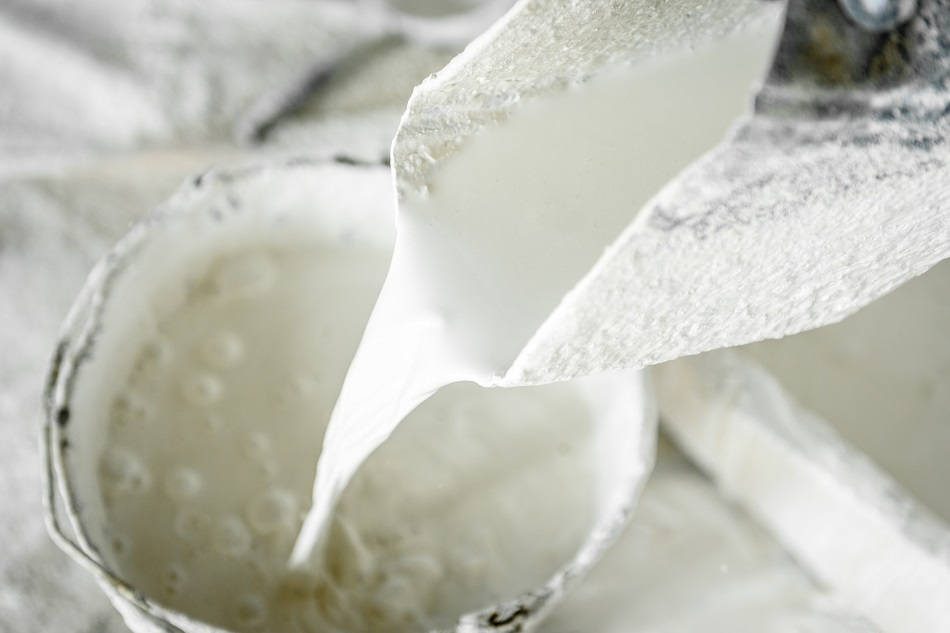Article Updated 7th July 2021

Image Credit: natali_ploskaya/Shutterstock.com
The purpose or end use of lime will determine the specific chemical composition that will be required for a given application. To accurately characterize the constituents of any lime sample, a wide range of different analytical techniques can be employed.
Significance of Lime and its Properties
Limestone is a naturally occurring sedimentary rock-forming mineral that is primarily composed of the mineral calcium carbonate (CaCO3). Limestone is typically used as a base material, as the decomposition of CaCO3 leads to the production of lime (CaO) and carbon dioxide (CO2). The decomposition of CaCO3 involves a variety of both physical and chemical processes that can significantly alter the final composition of its byproducts; therefore, it is critical for industries that are interested in using lime to conduct a precise elemental analysis of this material before its use.
Standard vs. Alternative Test Methods
Standard test methods that can be used to analyze lime samples include any technique that is based on the gravimetric or volumetric analysis. Comparatively, alternative test methods, which can also be referred to as optional test methods, typically have significantly lower time requirements as compared to a standard test method. Since alternative test methods will often utilize more expensive and advanced equipment, it is at the discretion of each laboratory to choose this type of technique over a standard method. Regardless of whether a standard or alternative method is chosen for a certain procedure, this analytical process is critical to not only determining the purity of a given sample but also allows lime producers to justify their prices to suppliers.
Common Alternative Methods
The characterization of limestone and its byproducts has been achieved by several alternative analytical techniques, the most common of which include X-ray fluorescence (X-RF) spectrometry, X-ray diffraction (X-RD), Fourier transform infrared spectroscopy (FTIR) and scanning electron microscopy (SEM) that is coupled with energy dispersive X-ray analysis (EDS). In addition to these techniques, several researchers have investigated how other less commonly used analytical techniques might enhance how lime is studied.
Laser-induced Breakdown Spectroscopy
Laser-induced breakdown spectroscopy (LIBS) is an atomic emission spectroscopy technique that allows researchers to obtain quantitative information on chemical samples. The basic principle behind LIBS is based on the excitation of a sample by highly energetic laser pulses. As the laser pulses interact with the sample, plasma light emission that is comprised of ionized matter is emitted and ultimately used to determine the spectral signatures of a given sample’s chemical composition. This intrinsically simple and rapid analytical technique has allowed for widespread use for many purposes, such as the analysis of geological materials.
LIBS has recently been used to determine the presence of various impurities present in limestone samples, which is the source of several different minerals, most notably of which includes lime. In this work that was originally published in 2018, researchers were able to confirm the presence of calcium, silicon, aluminum, sodium, iron, titanium, potassium, strontium, and sulfur within a limestone sample. The ability to quickly and accurately identify such purities is of the utmost importance for several applications that require these materials to contain specific chemical compositions. In addition to being a fast and precise tool, LIBS is also a non-destructive technique that requires almost no sample preparation, which further supports the use of this tool for investigative elemental analysis purposes.
Conclusion
Each of the analytical methods discussed here aims to provide interested parties with the highest quality of lime for their given industrial purpose. While these methods may not directly improve the lime sample, they allow for end-users to select the specific chemical characteristics that must be present in their lime products.
Sources and Further Reading
- Hwidi, R. S., Tengku Izhar, T. N., & Mohd Saad, F. N. (2018). Characterization of Limestone as Raw Material to Hydrated Lime. E3S Web of Conferences. DOI: 10.1051/e3sconf/20183402042.
- Anabitarte, F., Cobo, A., & Lopez-Higuera, J. M. (2012). Laser-Induced Breakdown Spectroscopy: Fundamentals, Applications and Challenges. Hindawi. DOI: 10.5402/2012/285240.
- Fahad, M., Farooq, Z., Abrar, M., Shah, K. H., Iqbal, T., & Saeed, S. (2018). Elemental analysis of limestone by laser-induced breakdown spectroscopy, scanning electron microscopy coupled with energy dispersive x-ray spectroscopy and electron probe microanalysis. Laser Phys 28. DOI: 10.1088/155-6611/aae49d.
Disclaimer: The views expressed here are those of the author expressed in their private capacity and do not necessarily represent the views of AZoM.com Limited T/A AZoNetwork the owner and operator of this website. This disclaimer forms part of the Terms and conditions of use of this website.